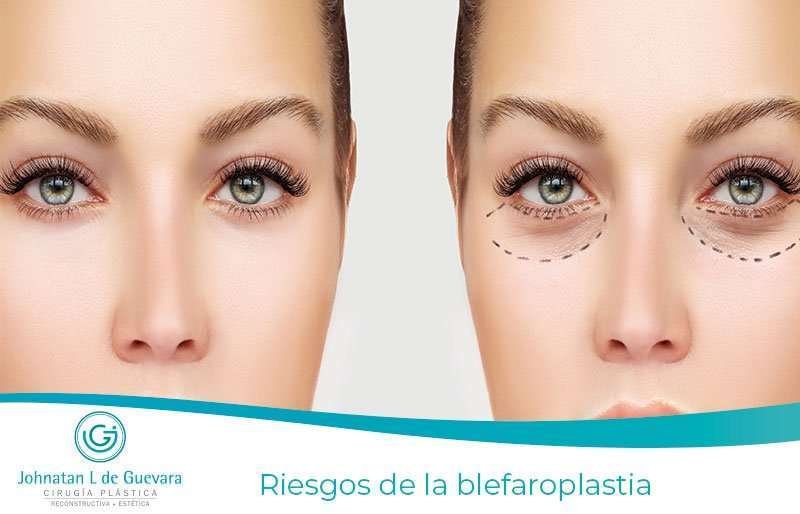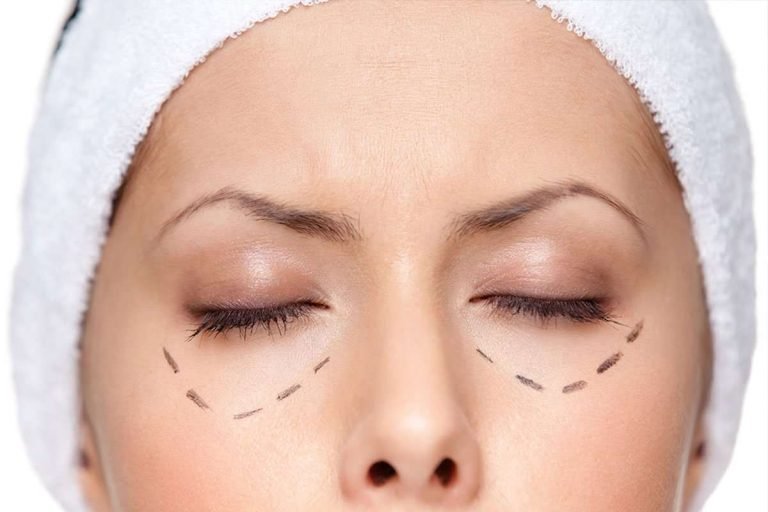What are the RISKS of undergoing blepharoplasty (eyelid surgery)?
The risks of undergoing blepharoplasty surgery depend on numerous factors. These include the training and skill of your plastic surgeon, the facility where your operation is performed, your lifestyle and substance use choices, and other health-related factors.
3 types of eyelid surgery risks: aesthetic, functional and health risks
Type 1: Cosmetic Risks and Possible Complications after Eyelid Surgery
Some risks of eyelid surgery are purely cosmetic, such as scarring or asymmetry.
All surgery has scars, and although blepharoplasty scars are often thin and hidden in the creases of the eyelids when the eyes are open, you may have more noticeable scars (results vary).
Esthetic risks include uneven eyelids or hollowing of the eyelids.
Lower blepharoplasty also has the risk of too much tissue being removed, leaving a “hollow” appearance. Fat transfer or fat redistribution can help.
Your blepharoplasty (eyelid) surgeon will review them with you before you give your consent.
Remember that asymmetry exists BEFORE surgery and will exist AFTER surgery as there is no such thing as perfection; however, some asymmetry can be corrected through surgical means or cosmetic injections.
Beware of the risks of choosing a discount eyelid surgeon who lacks experience in performing these procedures, as eyelid surgery requires very high level skills to prevent major problems with the appearance, vision and function of the eyelids.
Type 2: Functional Risks and Possible Complications after Eyelid Surgery
Other risks of eyelid surgery due to blepharoplasty affect the function of the eyes or eyelids (examples: blinking, vision, tear ducts).
If too much skin is removed, there is an increased risk that patients will have trouble closing their eyes completely, especially during sleep.
This complication can lead to dry eyes and frequent eye irritation and discomfort, along with the need for frequent use of lubricating eye drops.
Lower blepharoplasty can also affect the muscles that align the eyes. This is very rare, but can result in “double vision”. This may be correctable, but is inconvenient and unpleasant.
Type 3: Complications of the surgery or anesthetic risks after eyelid surgery
Infection in blepharoplasty is rare because the eye and the area around it are very well supplied with blood by a network of very small vessels.
The high level of blood supply ensures that the body can supply the eyelid with everything it needs to fight infection and heal quickly. However, infection is possible.
Quitting smoking well before the procedure greatly improves healing and reduces the risk of complications.
Experience, careful preoperative preparation and a conservative approach serve to help reduce risks, including removal of excess tissue, dry eye syndrome and other complications.
Because upper blepharoplasty does not require general anesthesia, the risk of general anesthesia is eliminated, but there is local anesthesia and allergies are possible.




